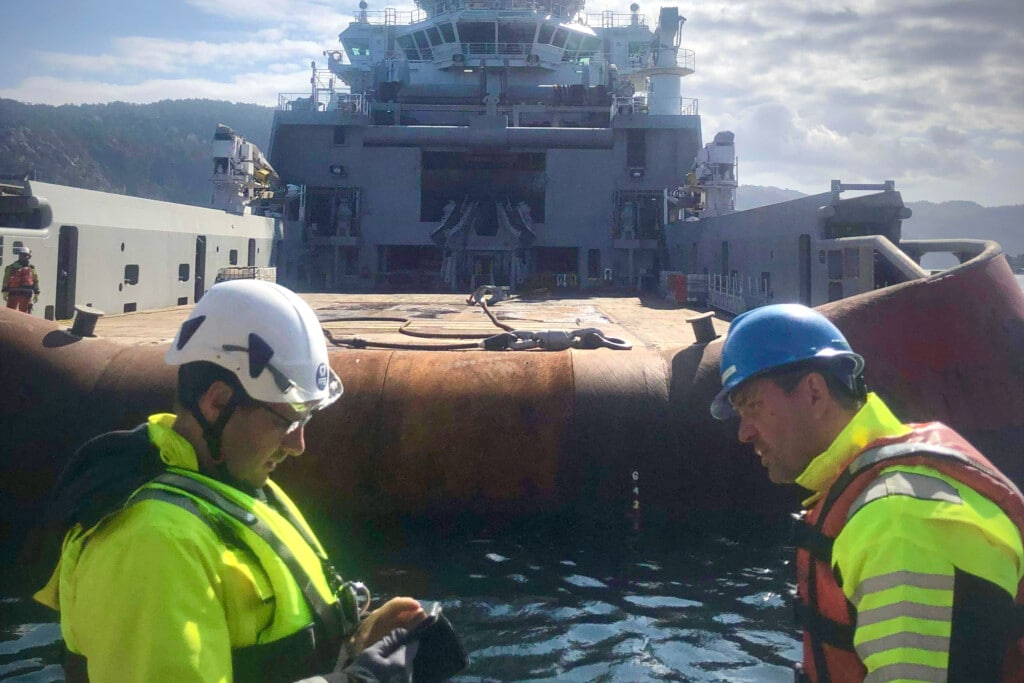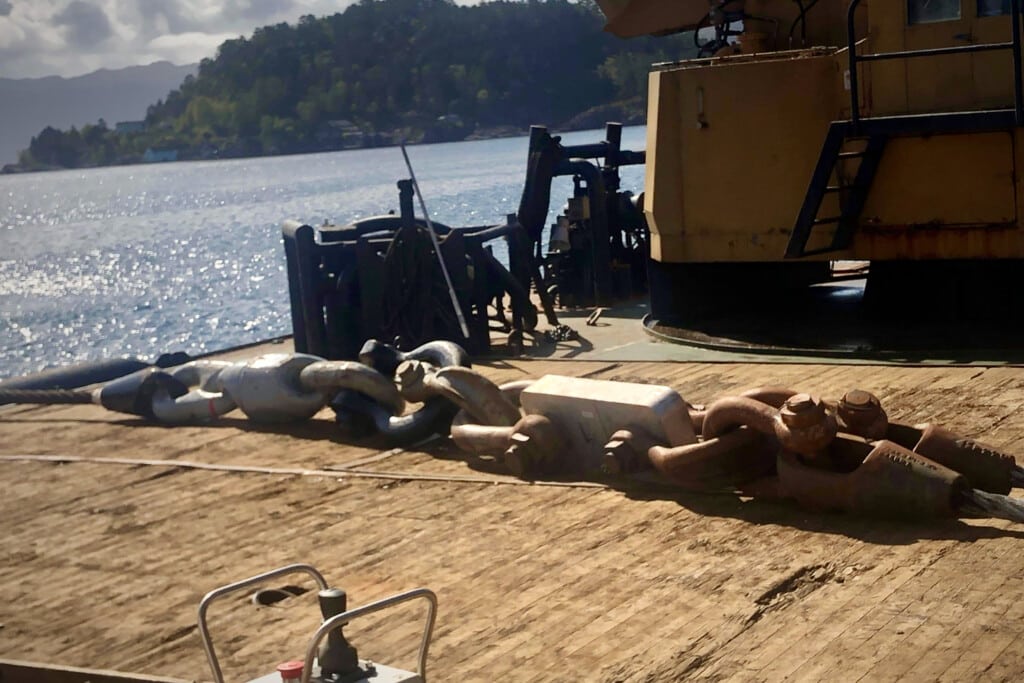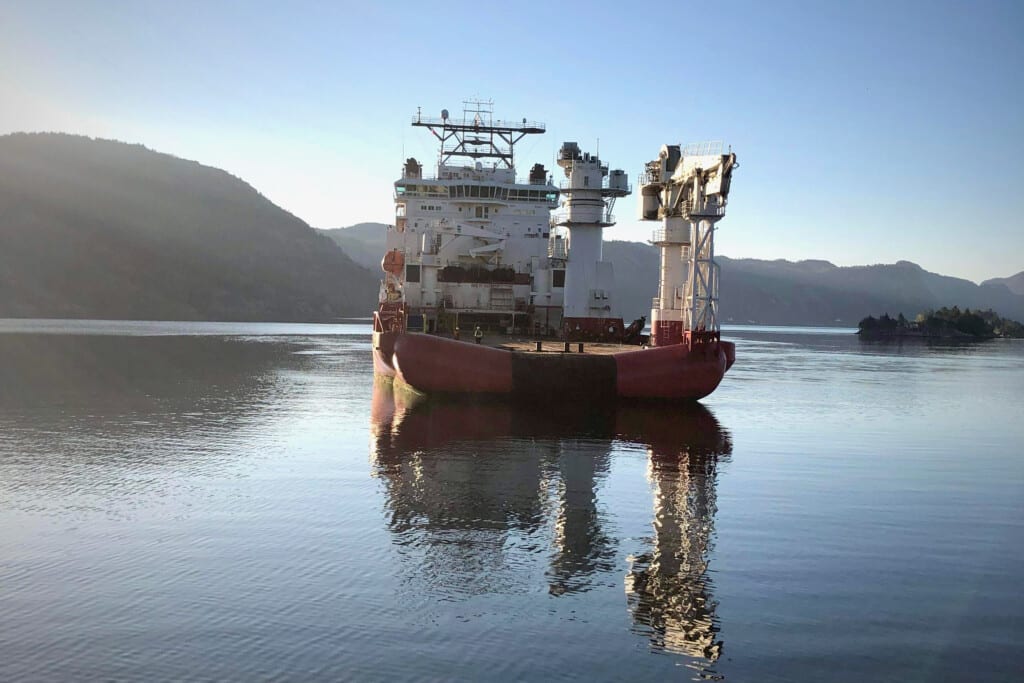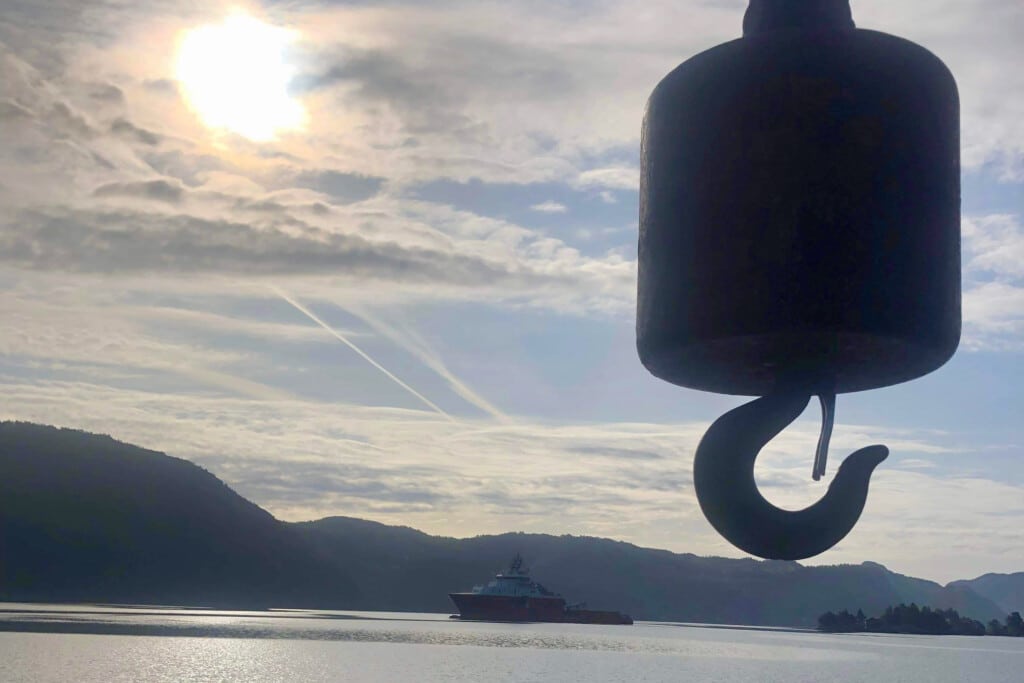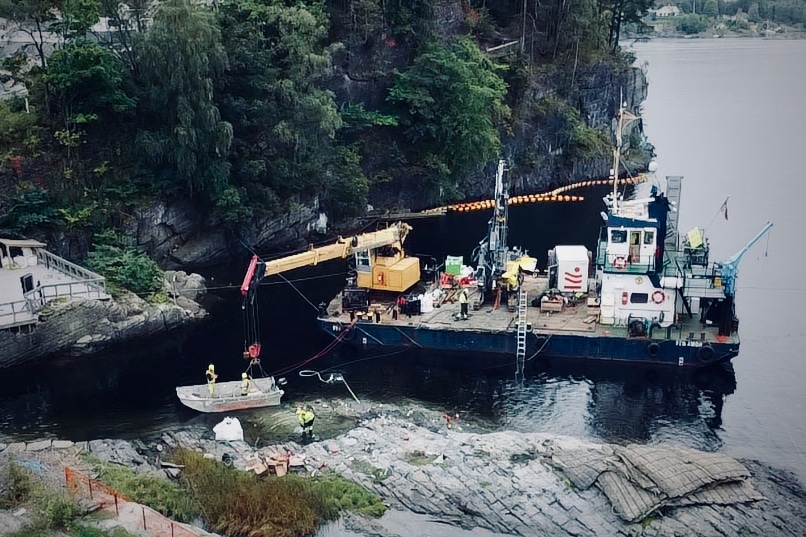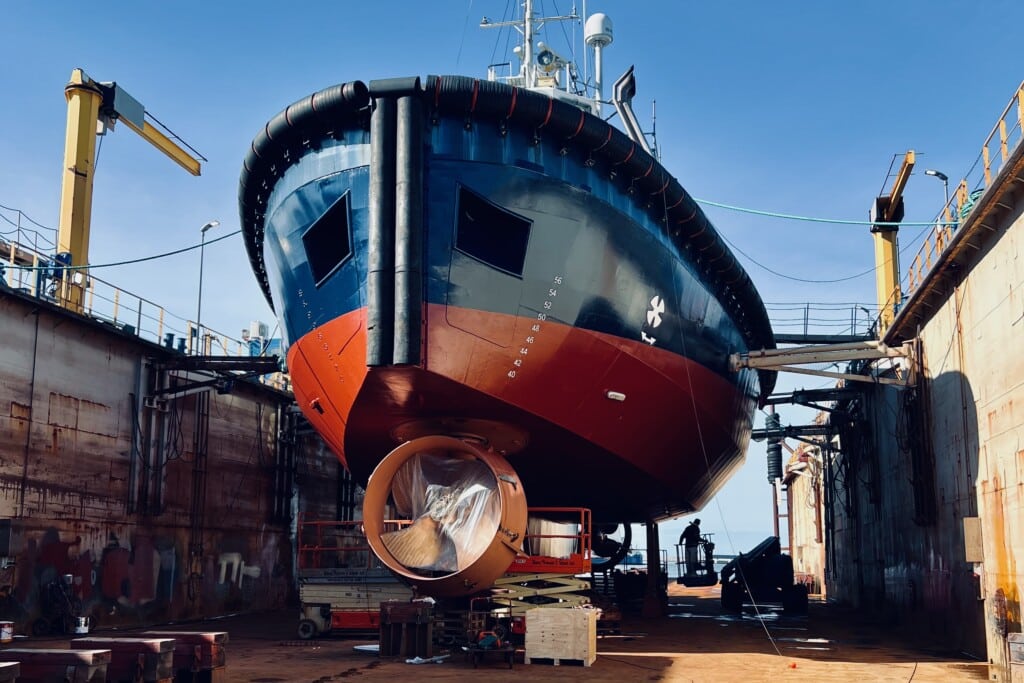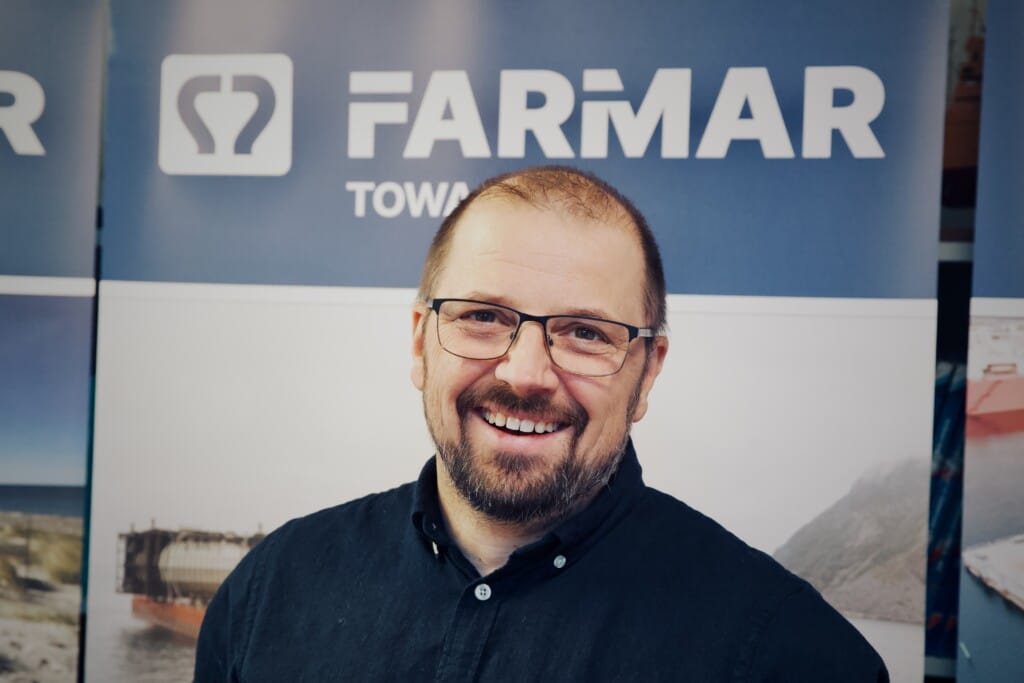Hot market for traction testing
23 February 2023
FFS has carried out eight bollard pulls in Stolsfjorden in Flekkefjord over the past six months.
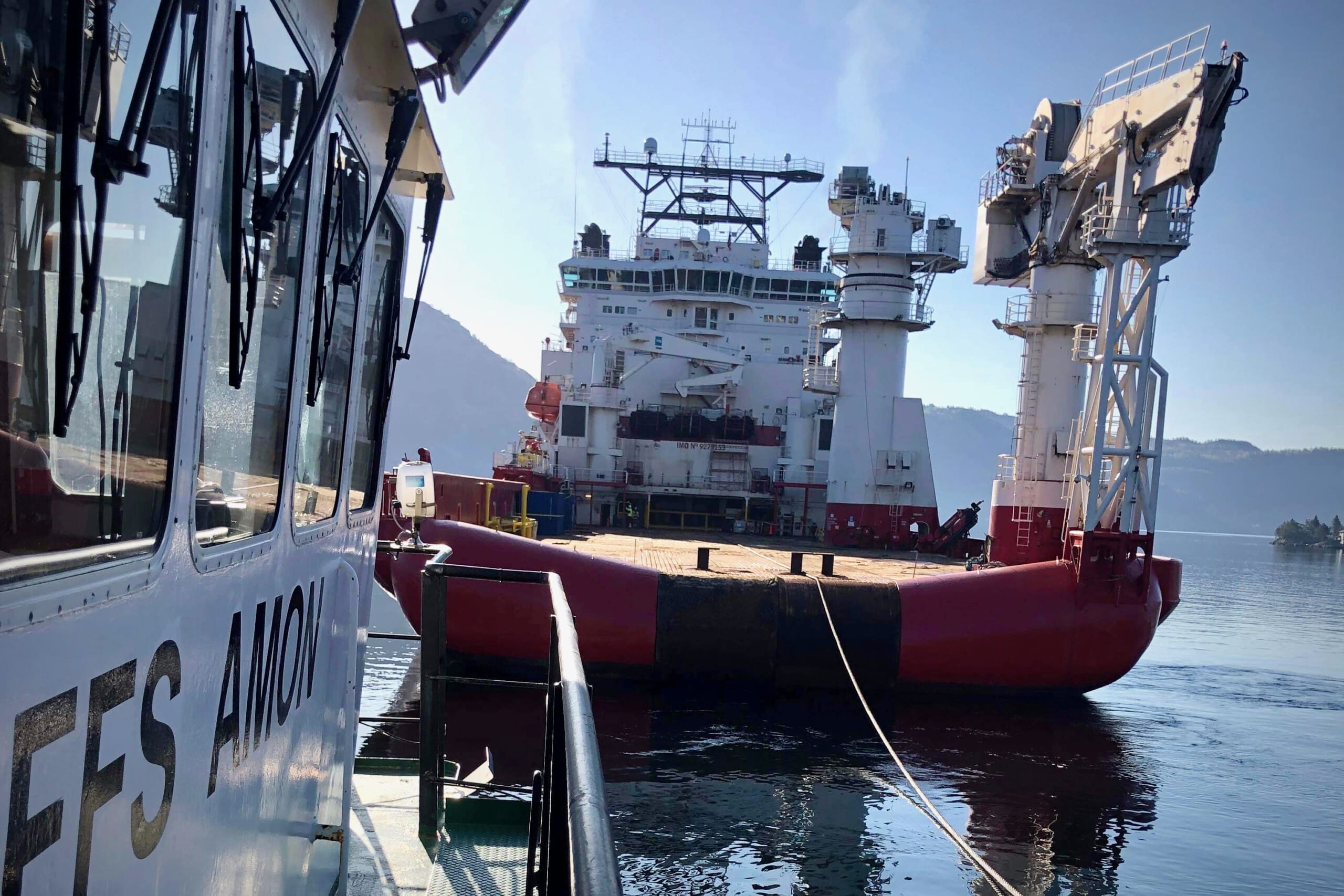
From one of the eight bollard pull operations that FFS has carried out in the past year. The cable from the boat is attached to a bollard on land. Then the tug of war begins.
Text: Sveinung W. Jensen, Tellus Kommunikasjon
- There is very good pressure at the moment, no doubt about it, says Tony Kristiansen.
He is one of three men on board FFS Amon, assisting the operations.
BOATS LIKE operators of anchor handling and "rig moves" are required to check the traction force on board every five years. Kjeholmen in Stolsfjorden outside Flekkefjord is considered to be among Europe's best places to carry out such bollard pulls.
- Here there is neither high tide nor low tide, and there is minimal wind, says Kristiansen.
THE WIRE IS ATTACHED in a specially installed bollard and is stretched as far as 1,500 meters out into the fjord. Then the boat starts to leave. A connected load cell shows how many tonnes the boat is pulling.
- Our load cell is calibrated once a year, and is certified by DNV for 400 tonnes. The pulling power of the boats being tested usually varies from 120 to 260 tonnes, while the strongest fit 400 tonnes with a good margin on the maximum, says Kristiansen.
The customers come from all over Europe. The feedback is very good.
- IT WORKS very fine. We have only received positive feedback on the facilities and the work we do, says Kristiansen.
As a rule, the boats arrive the day before and dock at the municipal quay in Flekkefjord.
- Before we start, we like to go on board, greet the crew and carry out a so-called toolbox talk. The operation itself takes between four and 14 hours, says Kristiansen.
Presentation
Crane vessel / 1980
